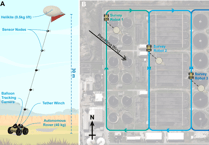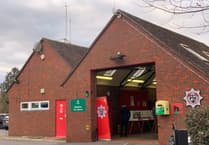NEW government plans to restore nature include an ambition for everyone to live within 15 minutes' walk of a green space or water such as a river or a lake. Our readers can, of course, already tick that box!
Titled Environmental Improvement Plan 2023, the government document was published on 31 January and includes commitments to create and restore at least 2,000 square miles of new wildlife habitats.
It starts with 70 new wildlife projects, including 25 new or expanded national nature reserves and 19 further nature recovery projects. It also promises to restore 400 miles of rivers and establish over 11 square miles of new woodlands alongside them.
Importantly for urban dwellers, it includes ensuring everyone in England has access to green space or water within a 15-minute walk from their home, such as woodlands, wetlands, parks and rivers.
We are lucky! Just think of the many local places where we can get close to nature, some of which may be almost on your doorstop - Chobham Common, Chobham Water Meadows, Horsell Common, St John’s Lye, Brookwood Country Park and even the wild spaces of Brookwood Cemetery.
And we must not forget landscaped residential areas, especially Goldsworth Park with its beautiful lake, green open areas and even several woodland areas. Goldsworth Park also has the North Meadow, a recent nature reserve initiative maintained and enhanced through the Natural Goldsworth Park project, supported by Goldsworth Park Community Association.
Woking Park is delightfully green but, for me, its 43 acres of attractive landscaped gardens are too artificial to foster a sense of getting close to nature.
But Woking does have a beautiful arboretum: The Basingstoke Canal runs right through the heart of the town, from Brookwood to Byfleet. In just a few paces, we can step away from urban life into the canal’s tranquil tree-lined corridor and experience a different world.
Slightly further afield, we are surrounded by many other wonderful “wild” areas where we can relax and explore: heathlands, woodlands and riversides. And the Surrey Hills Area of Natural Beauty (AONB) provides a variety of wildlife habitats, as well as viewpoints with distant views and opportunities for many long and short distance walks within gorgeous countryside.
Perhaps you take all these places for granted if you were brought up locally. I moved to Woking from North Cambridgeshire’s bland, flat agricultural landscape 40 years ago, and I still recall the excitement of discovering and exploring the wide variety of beautiful open countryside in Surrey.
Who wouldn’t be after growing up on the edge of the Fens, with their flat treeless landscapes!
Returning to the new Environmental Improvement Plan, it seems to me unlikely any of the major nature recovery projects promised will be coming our way, as west Surrey already has many nature reserves and numerous Sites of Special Scientific Interest, which indicate conservation areas where some of the most important habitats and species can be found.
However, as the climate changes and the risk of droughts and wildfires increases, heathland such as at Chobham Common will require more protection and management. In addition, wildlife habitats have become increasingly fragmented by development and changes in land use, so species are unable to spread.
As reported recently in the News & Mail, a new People’s Postcode Lottery-funded scheme, Space4Nature, is being rolled out initially on Chobham Common, most of which is a national nature reserve. It will aim to use detailed mapping of habitats to connect the diverse habitats there, at other places in Surrey, and ultimately on a hugely ambitious scale. It will help connect and restore wildlife habitats across Surrey.
Several studies have shown that being close to nature is good for our health and wellbeing. While out and about recently, it’s been uplifting to see green shoots and early flowers, robins taking nesting materials into hedges and hearing male blackbirds announcing themselves with their melodious song from the treetops.
And to see the variety of countryside habitats within a journey of just a few miles. Yes, we’re lucky to live here.




